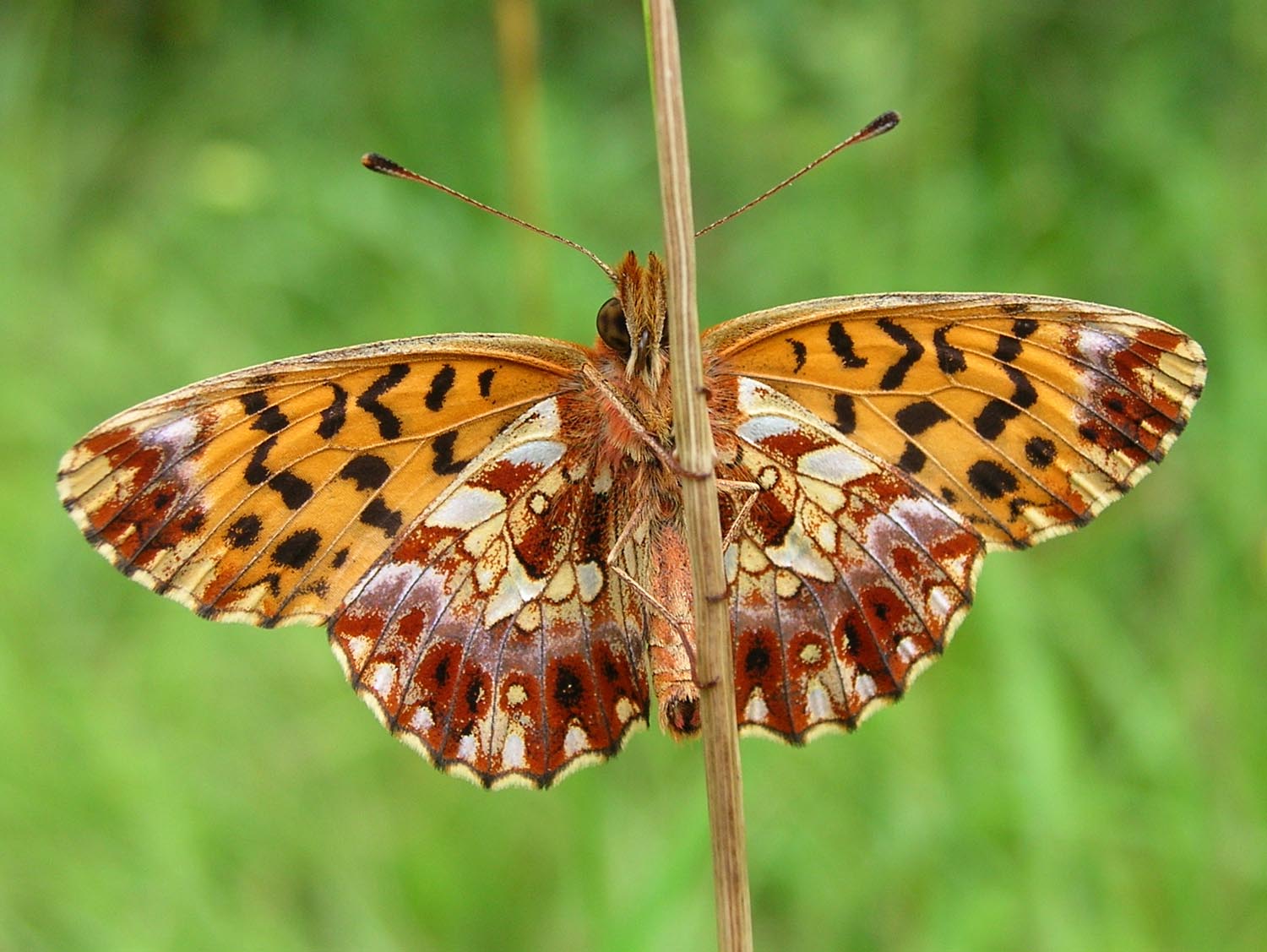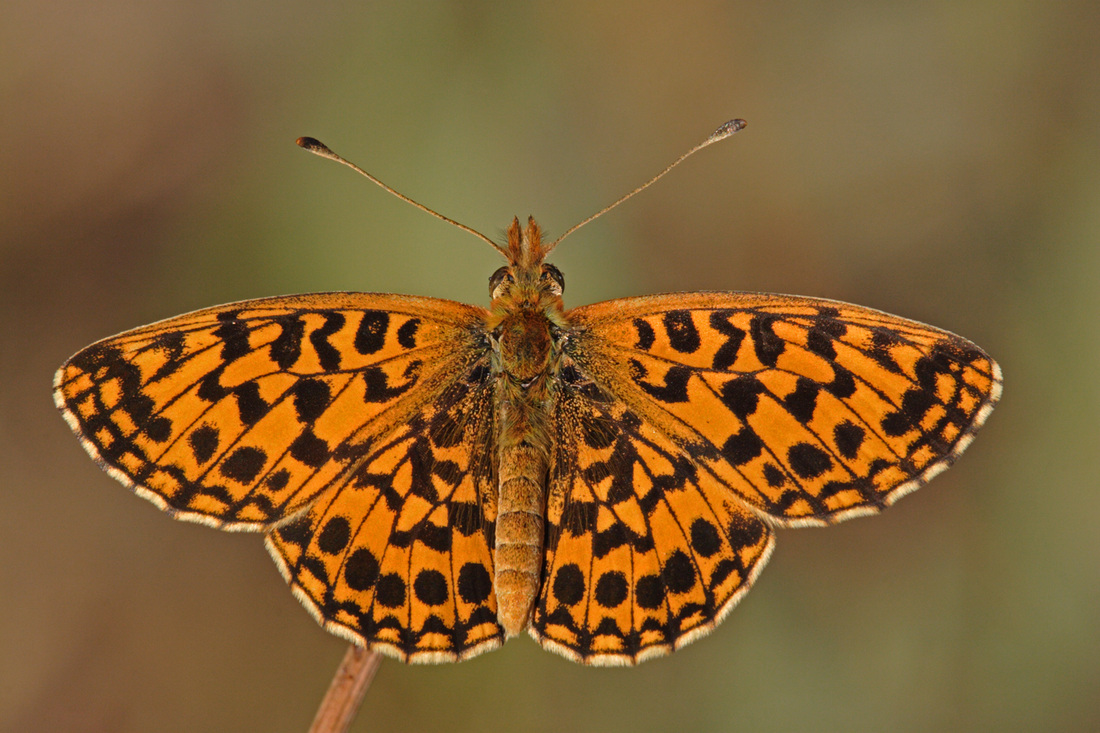Boloria dia
Magerrasen Fritillary ( Boloria dia)
The Magerrasen Fritillary or Violet Fritillary grove ( Boloria dia) is a butterfly ( butterfly ) of the family Nymphalidae ( Nymphalidae ).
- 6.1 Notes and references
Features
The moths reach a wingspan of 32-36 millimeters, and thus belong to the smallest Perlmutterfaltern in Central Europe. Their wings are also elongated than those of the other species. The upper wing are yellow-orange and bear a pattern of black spots. The outer edges of both pairs of wings are fine white and black dashed lines. In Postdiskalregion a black dot row is arranged parallel to the outer edge. The Diskal and basal region has slightly larger, up to the veins reaching, stains. In the dark basal region, a larger, round black dot is found. The cores of the entire top surface are finely colored black. The lower wing surface is colored dark relative of a mixture of purple brown and yellow ocher. Especially in the center, but also at the base you can see three larger and some smaller Perlmutterflecken next few ocher- yellow spots. In the Postdiskalregion runs a little clearer violet colored napkin, behind you can see analogous to the black dots the front of several brown, dark nucleated patches. At the outer edge there are some dark areas with occasional white inclusions.
The caterpillars are about 20 mm long and are those of the Braunfleckigen Perlmutterfalters ( Boloria selene ) are very similar. They are brownish black with fine white spots and wear on each segment a number of light-brown spines. Unlike the similar manner, the front pair of mandrel is not extended.
Occurrence
The animals are found in Europe, but they are missing in parts of the Mediterranean region in Northern Europe and the British Isles. To the east extends their range on the Caucasus to Mongolia. They are found at altitudes 500-1550 m. They live mainly on calcareous dry grassland, sometimes on sandy nutrient-poor grasslands, in open woods and on fallow fields. They are not rare in the south of Germany, in the north they come but only sporadically before. In general, they are found in only small numbers of individuals.
Way of life
Flight times and caterpillars
The Magerrasen Fritillary flies in two generations from late April to mid-June and from mid-July to mid-August. The caterpillars can be found in August and after hibernation until April and in June and July. In unfavorable years or on cooler places, only one generation is formed, at optimal locations is also a third generation may develop in September and October.
Food of the caterpillars
The caterpillars feed on rough Violet (Viola hirta ) and other violet species, but also of blackberries (Rubus fruticosus ), raspberry (Rubus idaeus ) and Small Brunelle ( Prunella vulgaris).
Development
The females lay their small, brightly colored eggs on shady standing caterpillar food plants. The caterpillars are active during the day and spend the winter half-grown in the third larval instar. Pupation takes place in a brown Stürzpuppe wearing silver spots on the back. It is of the Fiery Perlmutterfalters ( Argynnis adippe ) are very similar, but much smaller.
Threats and conservation
- Red List BRD: 3 (endangered ).

_dia-001.JPG/250px-Nymphalidae_-_Boloria_(Clossiana)_dia-001.JPG)







